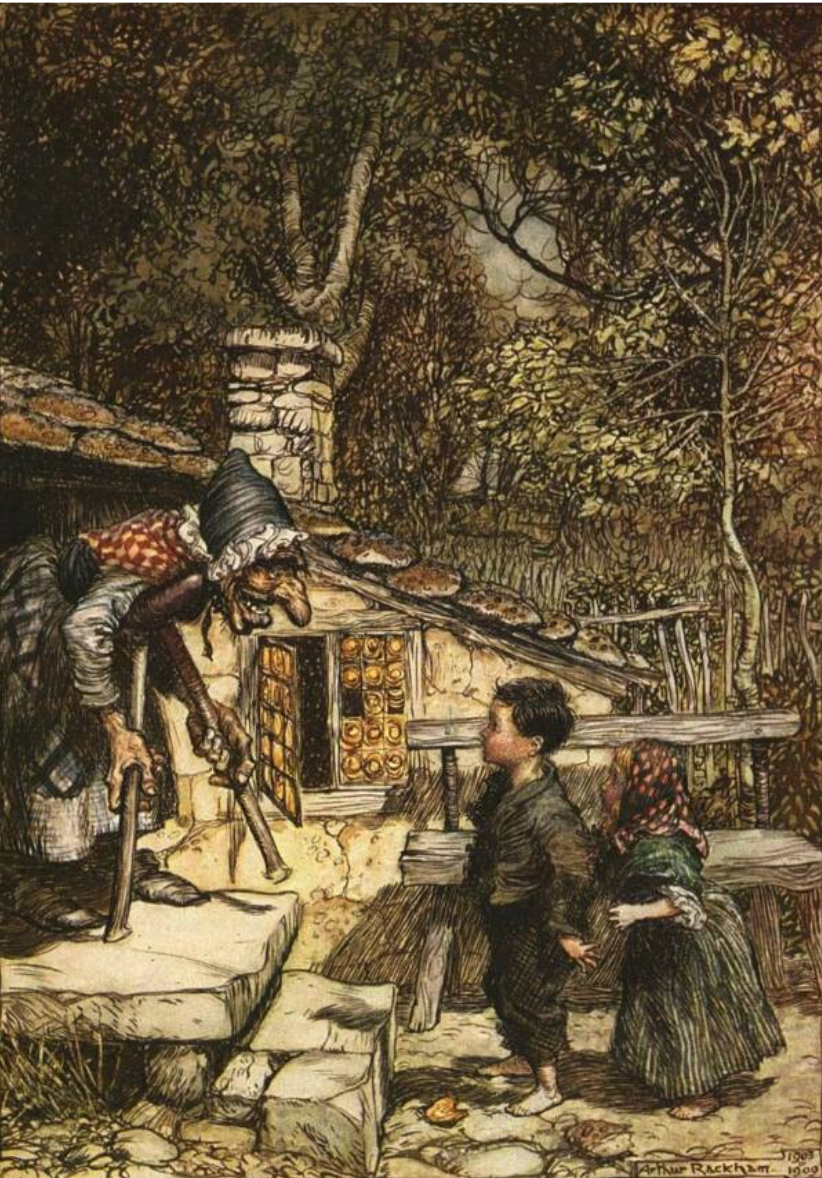-
- Hansel and Gretel, by Jacob and Wilhelm Grimm, also known as the Brothers Grimm, tells the story of siblings, Hansel and Gretel, in Medieval Germany who are abandoned by their parents.
- Hansel and Gretel’s parents take them to the forest, where they plan to leave them. However, Hansel knows of their plan and drops a trail of stones behind him so that the siblings can find their way back home.
- The parents abandon their children in the forest for a second time, and this time Hansel makes a trail of breadcrumbs. However, birds eat the breadcrumbs, and Hansel and Gretel become lost.
- The children come across a giant gingerbread house in the woods and they begin to eat it as they are both starving. A witch who lives in the gingerbread house enslaves Gretel and forces her to feed Hansel so that he may grow big for the witch to eat.
- The children trick the witch and shove her into her own oven before she can eat Hansel. They return home, and their mother dies shortly after.
- Hansel and Gretel was included in the first volume of Kinder-und Hausmarchen, or Grimms’ Fairy Tales, published in 1812, but the story originated in the Baltic region around 1315 CE. The Brothers Grimm likely heard it from Wilhelm’s wife, Henriette Dorothea Wild.
- The Grimms originally wrote their stories to preserve German culture and folklore, not necessarily so that they would be read by children. As a result, this story and many of their others include dark themes such as murder, cannibalism and abandonment.
- Hansel and Gretel, by Jacob and Wilhelm Grimm, also known as the Brothers Grimm, tells the story of siblings, Hansel and Gretel, in Medieval Germany who are abandoned by their parents.

An illustration of Hansel and Gretel meeting the witch outside of her gingerbread house in Hansel and Gretel (from Williams, 2020).
How is this related to climate?
- The story of Hansel and Gretel was inspired by the Great Famine of 1315-1317 in Europe. The famine was caused by the Little Ice Age, a period of widespread cooling and a drop in average global temperatures, that brought cold weather and torrential rains to Europe. The rains were particularly harmful to food supply, as they rotted crops and promoted diseases that infected livestock.
- The famine created dire conditions in Europe. The elderly often went hungry to spare food for younger people. Parents abandoned their children because they could not feed them and some people even resorted to cannibalism.
- Shortly after Hansel and Gretel kill the witch, their mother dies, suggesting that these characters are linked, or are the same character. The mother and witch represent a person suffering from starvation and their desperate actions.
References and additional resources
- Arnold, S. H. “The Origins of Stories – Hansel and Gretel.” Medium. 2020. https://medium.com/the-everyday-writer/the-origins-of-stories-hansel-and-gretel-6833d47d5546.
- McBride, C. “The Dark History Behind Hansel and Gretel.” Syfy Wire. 2020. https://www.syfy.com/syfywire/the-dark-history-behind-hansel-and-gretel.
- Williams, J. “Discover the Truly Grim History Behind the Fairy Tale of Hansel and Gretel.” All That’s Interesting. 2020. https://allthatsinteresting.com/hansel-and-gretel-true-story.
